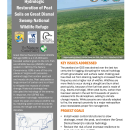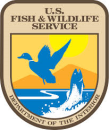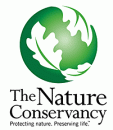Location



















States
VirginiaEcosystem
Forest, WetlandIntroduction
Great Dismal Swamp National Wildlife Refuge (GDS) is a 113,000-acre forested wetland given to the U.S. Fish and Wildlife Service (USFWS) National Wildlife Refuge System in 1974 by The Nature Conservancy, along with additionally purchased land. The refuge covers a section of the Great Dismal Swamp spanning a region of coastal plains in Virginia and North Carolina.
GDS is one of the few places in Virginia with pocosins. Pocosins are wetland bogs that contain peat soil and woody shrubs. The peat in the swamp consists of black, finely-grained, decomposed organic soils (NOAA, n.d.). Globally, peatlands hold between 16 and 33% of global soil carbon stocks even though they account for just 3% of the land surface (Bridgham et al., 2006). Peatlands sequester and store carbon over time. Efforts to restore and preserve peatlands increase carbon sequestration in a particular ecosystem and serve as a strategy to mitigate climate change climate change
Climate change includes both global warming driven by human-induced emissions of greenhouse gases and the resulting large-scale shifts in weather patterns. Though there have been previous periods of climatic change, since the mid-20th century humans have had an unprecedented impact on Earth's climate system and caused change on a global scale.
Learn more about climate change .
From the 18th to mid-20th centuries, the swamp was drained to harvest and sell lumber. Logging disrupted the hydrology of the swamp and dried out the peat soils, which made the swamp more susceptible to wildfire. Peat fire can be disastrous because it burns underground and releases stored carbon. Since refuge establishment, water control structures were constructed in the ditch network to slow drainage and conserve water in the swamp. Starting in 2013, the USFWS began two large-scale hydrological restoration projects to rewet the peat, reduce impact of wildfire, and increase carbon sequestration by installing water control structures across the refuge. One project was spurred by funding from the Hurricane Sandy Disaster Relief Act. The integration of nature-based solutions into day-to-day work, such as peatland restoration, provides for human well-being and biodiversity benefits. The USFWS has identified nature-based solutions, such as rewetting peatland, as a key strategy in the USFWS Climate Change Action Program to unify its climate response in accordance with the Department of the Interior’s Nature Based Solutions Policy.
Key Issues Addressed
The peatland on GDS was drained over the last two centuries to support logging practices. As a result, a network of over 150 miles of drainage ditches and logging roads disrupts the natural flow of both groundwater and surface water, exacerbating the vulnerabilities of the swamp to increased temperatures and drought from climate change. Additionally, because the existing peat has dried out from drainage, it has lost much of its water retention properties. This leads to increased frequency of flooding events and a higher risk of wildfire.
Short-term drought is a normal part of the swamp’s climate; however, the intensity and frequency is increasing at abnormal rates due to climate change. Wildfire risk is further exacerbated by artificial drainage of the peat soil. Wildfires are more likely to occur during a drought and burn deeply into the drained peat. When peat burns, the carbon stored over thousands of years in the soil is released into the atmosphere, which has negative implications for climate change. While pocosins are naturally adapted to fire, drainage has increased the severity of these fires. The swamp’s proximity to a major metropolitan area demands proper fire management. The swamp has experienced two major fires in the last twenty years. Over twenty million dollars have been spent on wildfire suppression and more than 1 Teragram of carbon stored in the peat soil was released to the atmosphere (Reddy et al. 2015).
Project Goals
- Install water control structures to slow drainage, rewet the peat, and restore the GDS natural hydrology
- Monitor how installing water control structures has affected peat hydrology
- Reduce the risk of high-intensity fire at GDS and increase the swamp’s resilience to drought and wildfire by rewetting the peat
- Use water management capabilities to meet habitat goals and objectives to restore or enhance historic forest communities
Project Highlights
Importance of Peat for Forests: Rewetting peat also improves the health of the swamp’s forest ecosystems, which include pond pine pocosin, Atlantic white-cedar, maple-blackgum, tupelo-bald cypress, and sweetgum-oak-poplar.
- Rewetting the Peat: The most heavily drained areas of the swamp were the initial focus of the project. Refuge staff installed, replaced, or repaired water control structures in existing ditches to reduce drainage and raise the water table in neighboring peat soils. The structures increased the distance that water travels as it leaks out of the swamp by directing it away from main canals, and moving it more towards tributary canals. This lengthens the time peat soil is wet, increasing its water-storage capacity and resilience to wildfire while subsequently minimizing flooding. Since 2014, surface and groundwater levels have been raised by 0.5 to 1 ft in the swamp. During an extreme rain event in 2021, the water structures were not damaged.
- Monitoring: Refuge staff installed groundwater and surface monitoring wells to monitor the effects of water control structures on the swamp’s hydrology and soil health. Additionally, there are four rod Surface Elevation Tables installed by the U.S. Geological Survey (USGS). These tables measure whether or not the peat is accumulating.
- Wildfire Management and Habitat Resiliency: The frequency of wildfires on the Refuge has decreased. However, this could be attributed to more precipitation events. There were two fires in the summer of 2019, and their impact was minor. The water control structures have decreased the vulnerability of the swamp to fire by allowing the soils to absorb more water and let excess water flow into minor tributaries, thereby increasing the resiliency of the habitat. Notably, the return on investment for installing these water control structures is high: the installation of one water control structure structure
Something temporarily or permanently constructed, built, or placed; and constructed of natural or manufactured parts including, but not limited to, a building, shed, cabin, porch, bridge, walkway, stair steps, sign, landing, platform, dock, rack, fence, telecommunication device, antennae, fish cleaning table, satellite dish/mount, or well head.
Learn more about structure requires $50,000-$100,000 and can influence hundreds of acres of land, whereas one fire can cost $2 million per acre to suppress. - Habitat Restoration or Enhancement: With increased water management capability through the installation of the structures, refuge staff can manage water levels to better meet forest hydrological requirements in priority management units.
Lessons Learned
While restoration efforts on GDS have been successful at re-wetting the peatland, continued restoration needs to occur in order to fully restore pre-disturbance hydrologic conditions. Data collected at surface elevation tables (SETs) indicate peat accretion is not occurring post restoration; however, the rate of peat subsidence is decreasing in re-wetted areas. Data indicate adding water control structures to slow drainage has made the swamp wetter, but it has not returned the swamp to its pre-disturbed hydrology. To fully restore the hydrology of the swamp, legacy infrastructure such as roads and ditches need to be removed and filled. To date, refuge staff have been reluctant to take these actions due to monetary constraints and loss of access to support fire fighting and habitat management actions. Although the road and ditch infrastructure limits the ability to fully restore the hydrologic processes of the swamp, it also provides access to implement habitat restoration and suppress wildfire.
The Service has successfully partnered with the U.S. Geological Survey (USGS) to conduct a significant amount of research on the swamp's ecology and hydrology since the refuge's establishment. The decades of baseline data that were documented enabled GDS managers to make informed decisions when planning a hydrologic restoration strategy. The methodology and strategy for hydrologic restoration (installing water control structures to slow drainage) on GDS has not changed in the last 50 years; rather, what has changed is the funding mechanisms to implement strategies. Previous restoration work on the refuge enabled managers to put forward competitive proposals to different funding programs such as the Hurricane Sandy Coastal Resilience Program. The previous research and data also meant that the refuge could begin projects quicker and put more money into water control structures rather than data collection. Using the data collected by USGS and USFWS staff, GDS staff were able to plan and prioritize future restoration sites when funding became available.
It was important for GDS staff to clearly communicate projects goals and outcomes of this work to the public. For example, these projects were not primarily for flood control in the community, but the project resulted in restored natural lands that can better buffer storm events and reduce impacts. The potential benefits of less flooding must be communicated strictly as a co-benefit, not an intended outcome so as to not create unrealistic expectations among community members that the project will directly fix the flooding on and adjacent to their properties.
Staff did not have the capacity to install the structures themselves, so the installation work required contracting. External partners were critical to this work, including The Nature Conservancy (TNC) of Virginia and North Carolina. TNC helped secure external grants, assisted with grant management, and provided required non-federal matching dollars.
Next Steps
- Continue monitoring the water control structures impact on peat rewetting
- Utilize future grants and additional funding to add more water control structures to rewet the peat and increase the GDS’s resilience to drought and wildfire
Funding Partners
Resources
- National Integrated Drought Information System
- National Oceanic and Atmospheric Association, What is a pocosin?
- The Quest to Keep Carbon in North Carolina’s Wetlands
- Bridgham et al.(2006) “The Carbon Balance of North American Wetlands.” Wetlands, 26: 889-916.
- Reddy et al. (2015) “Quantifying soil carbon loss and uncertainty from a peatland wildfire using multi-temporal LiDAR.” Remote Sensing 170: 306-316.
Contacts
- Fred Wurster, Hydrologist, USFWS: fred_wurster@fws.gov
- Chris Lowie, Refuge Manager, USFWS: chris_lowie@fws.gov
CART Lead Author
Matthias Benko, CART Case Study Writer, USFWS Maintenance and Infrastructure Fellow
Suggested Citation
Benko, M., Wurster, F., and Balentine, K. (2024). “Hydrologic Restoration of Peat Soils on Great Dismal Swamp National Wildlife Refuge.” CART. Retrieved from https://www.fws.gov/project/nature-based-solutions-hydrologic-restoration-peat-soils








